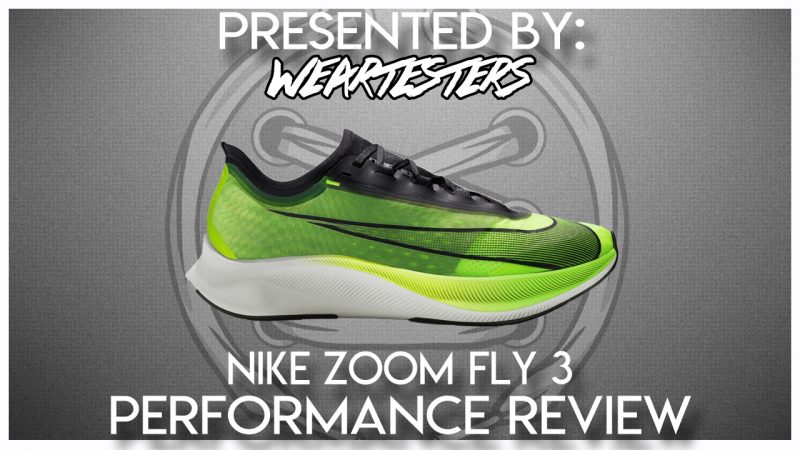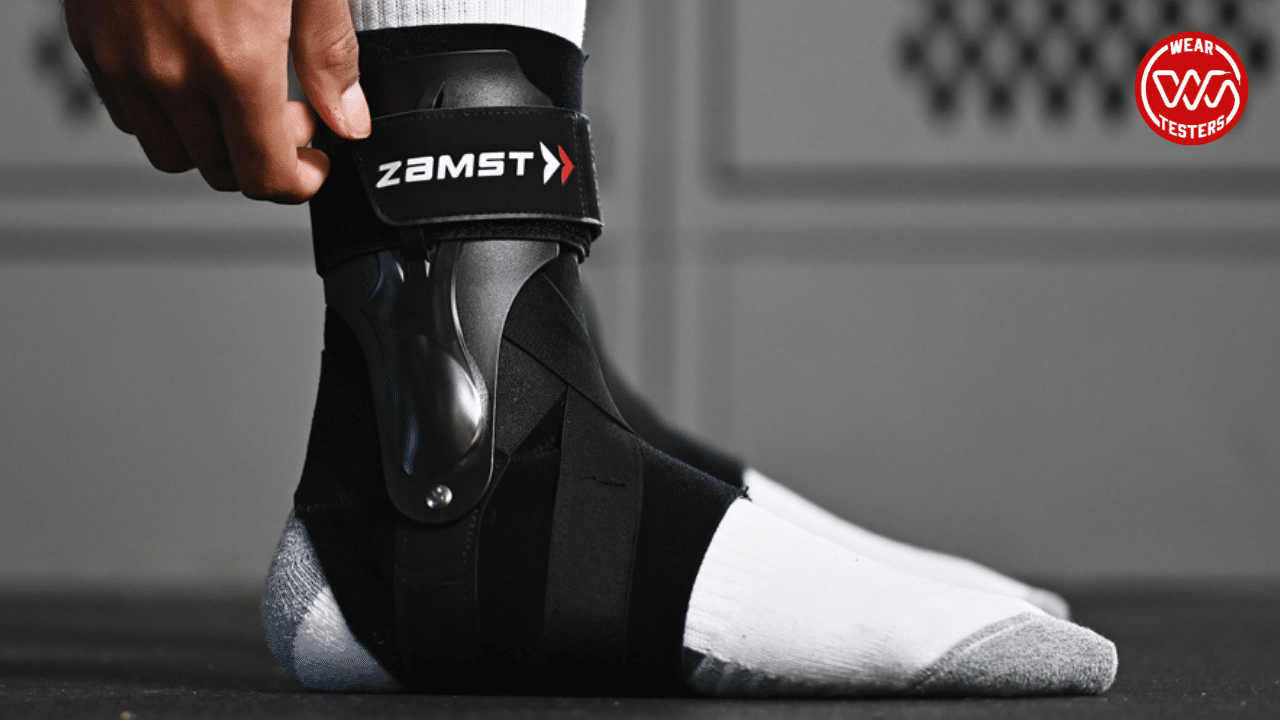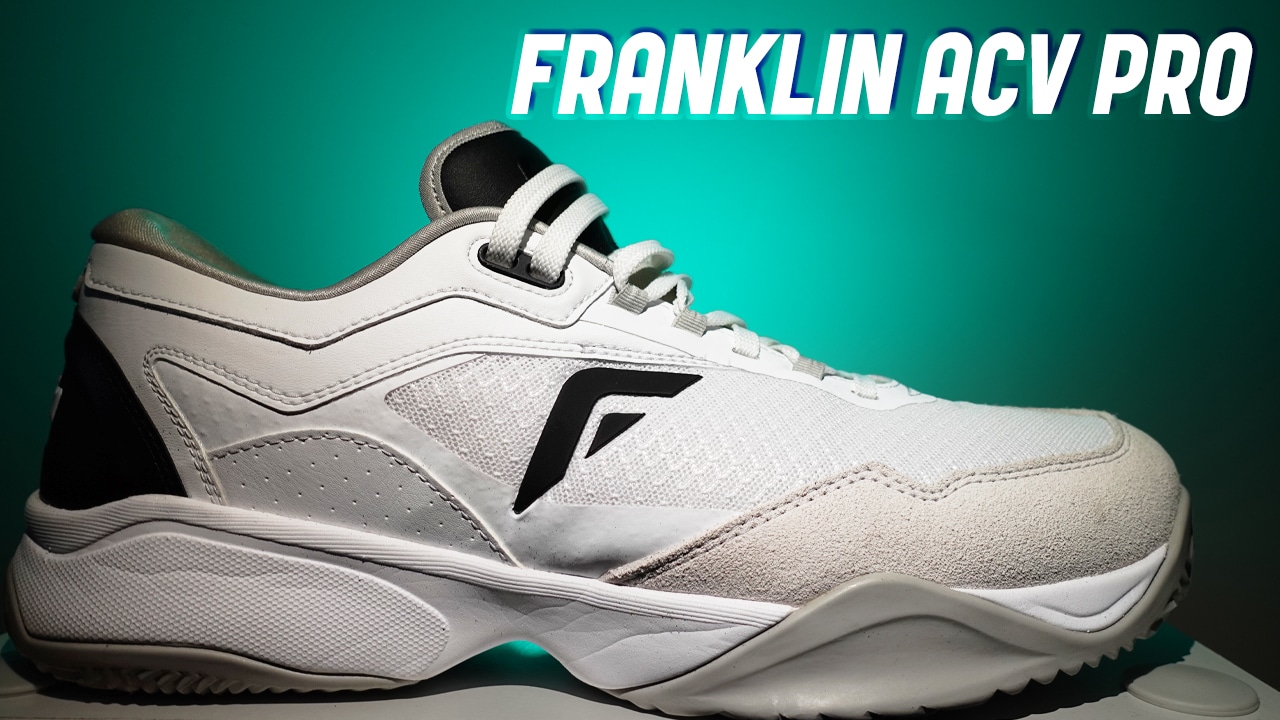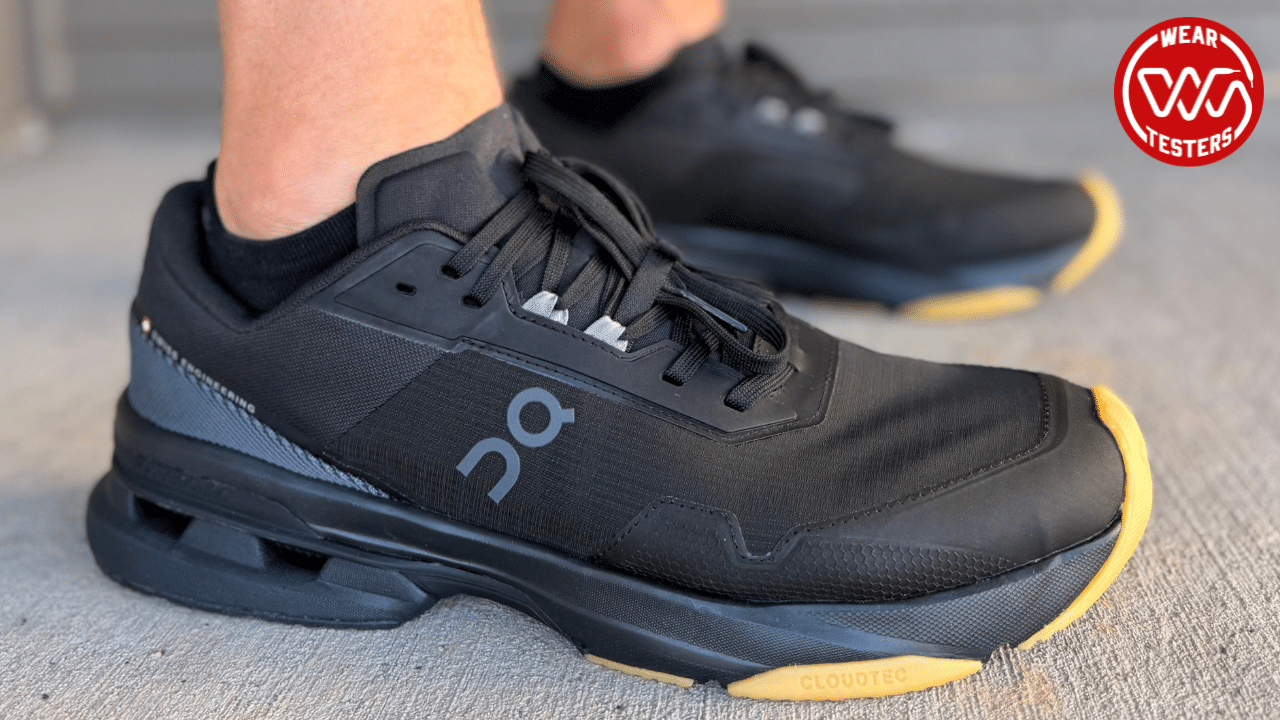The Nike Zoom Fly 3 is one of two Nike running shoes in 2019 to feature a carbon fiber plate. The Zoom Fly 3 is the more budget friendly of those two shoes. The other shoe is the world’s consensus number one racing shoe, the Nike ZoomX Vaporfly Next% ($250). Nike has been the driving force behind returning carbon fiber plates to popularity. Other brands have caught on and are releasing their own really good carbon fiber plate shoes (for example, the Hoka Carbon X). At $160, the Nike Zoom Fly 3 is among the least expensive running shoes to feature a carbon fiber plate so we had to try them out.
The WearTesters team (Eric Delgado and Drew Whitcomb) tested the Nike Zoom Fly 3 for over 140 miles across a wide variety of surfaces in speed workouts, treadmill training, long runs, casual wear, and more.
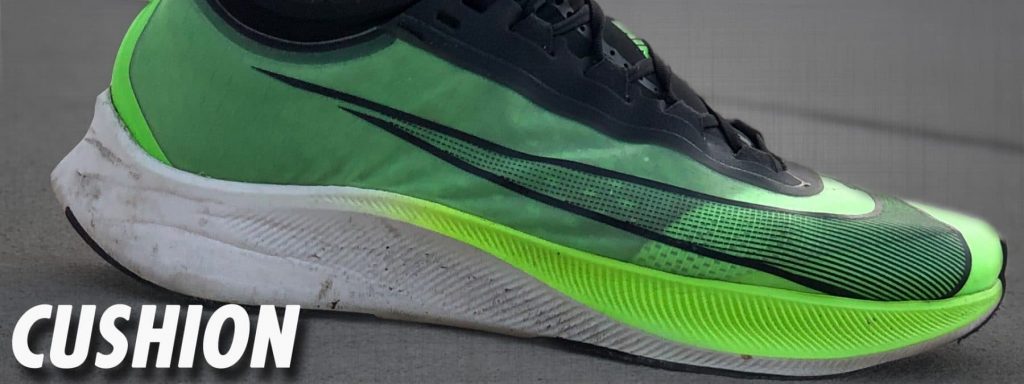
Eric: I was skeptical of the cushioning when I first tried on the Zoom Fly 3. The React cushioning on these is not as soft as the React found in other Nike running models (like the Epic React), it’s bouncier and denser. The bounce is a good thing, but I thought the density would make my knees hurt after long runs. Surprisingly, that didn’t happen. After a few miles, the cushioning really softens up and the carbon fiber plate, coupled with the bounce of the React foam, continue to propel you forward effortlessly. I was running times I usually run with less effort than normal. I ran my personal 5k record the very first time I wore them. I thought I was traveling at my usual pace until I looked down at my watch and saw that I was about 30 seconds faster. My knees and back always felt great after runs in Zoom Fly 3.
Drew: I agree with Eric that the Zoom Fly 3 feels heavy in hand but not on foot. Once you start running the amazing bounce it provides, due to the pairing of React and the carbon fiber plate, make it feel like the shoe is really pushing and helping you with every step. It’s a really nice, plush ride. A side benefit of the midsole being so heavy is that the cushion doesn’t bottom out. Ever. To test the endurance of the cushioning set up, I wore them for an entire week. 40 total miles spread over 5 straight days of running workouts, a rest day, and an 11.5 mile long run. The cushion took the punishment. There was a noticeable loss of bounce by the end of the week but the shoes were still performing at a high level. That’s unheard of among mainstream running shoes. This is one of the better cushioning setups on the market.
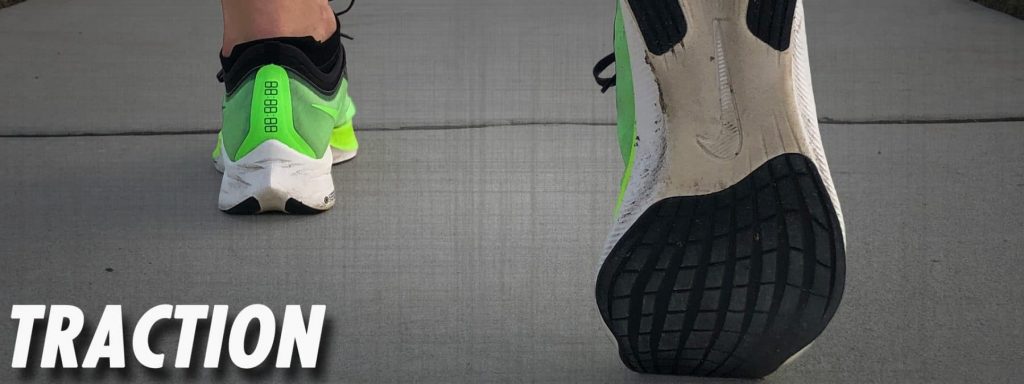
Eric: Nike used a hard rubber for most of the forefoot area as well as two spots on each side of the heel. The rest of outsole is exposed React. The traction on these wasn’t impressive but it got the job done. I felt like I would more easily slide on smooth surfaces compared to typical running shoes. But this is a hybrid racing shoe, so traction isn’t as important when you’re expecting to run on dry concrete and asphalt. I experienced zero issues when running on normal race friendly surfaces.
Drew: The first time I wore the Nike Zoom Fly 3 I ended up running in a driving rainstorm. Within minutes my clothes, my shoes, and the roads were soaked. That storm gave me the chance to try brand new traction in the slipperiest possible conditions. And I didn’t have any issues. No slipping or sliding at all. Even though the outsole doesn’t look like much, it operates like a car tire channeling the water away and letting you get a good grip.
After about 80 miles in them, the traction was showing heavy wear. I doubt I’ll get the desired 300 miles out of the Zoom Fly 3, 200-250 miles seems like a more realistic target. That’s not unexpected with a shoe that proclaims itself race-day ready, but it’s also marketed as an everyday shoe. It would be nice to get more miles from the outsole.
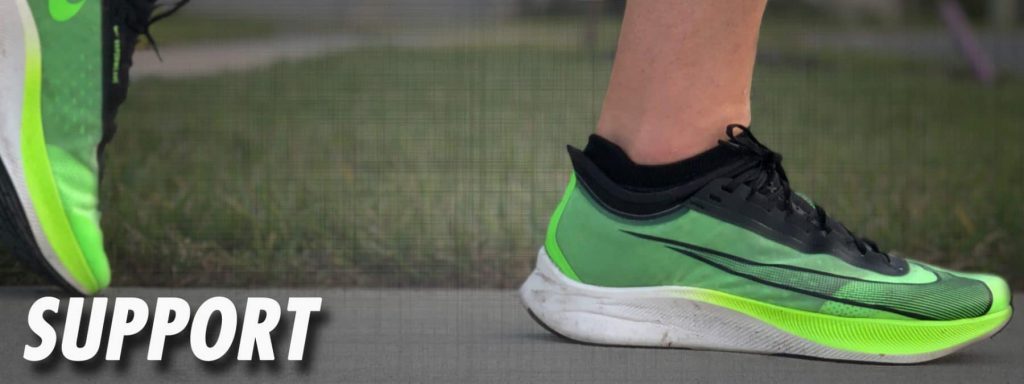
Eric: Not much to write about here, this is a neutral shoe with a very narrow last and midsole. It was a problem for me and my wide feet. I felt like a bit of my midfoot was hanging over the edge of the midsole. I was able to help the situation with an arch support insole (this one’s my favorite). Because of the instability, I completely avoided running on trails or uneven surfaces when wearing the Zoom Fly 3. I did notice that the faster I went, the less I noticed the instability. I’m not an overpronator nor do I heel strike, but I like shoes with a bit of support (as you can see in my review of the Hoka Arahi 3). If you have a narrow foot and prefer forefoot striking when you run, then the lack of stability won’t be a problem.
Drew: As long as you don’t spill over the footbed, the Nike Zoom Fly 3 will support you on roads, sidewalks, and tracks. I tested these on uneven ground and rocks to get a feel for how they’d respond. The React midsole absorbs the rocks well but there’s not enough side to side protection to avoid ankle sprains on real trails. The midsole does flare out in a sort of outrigger-like way at the forefoot but doesn’t do much due to the pliability of the React cushioning. Save these for your road and track runs.
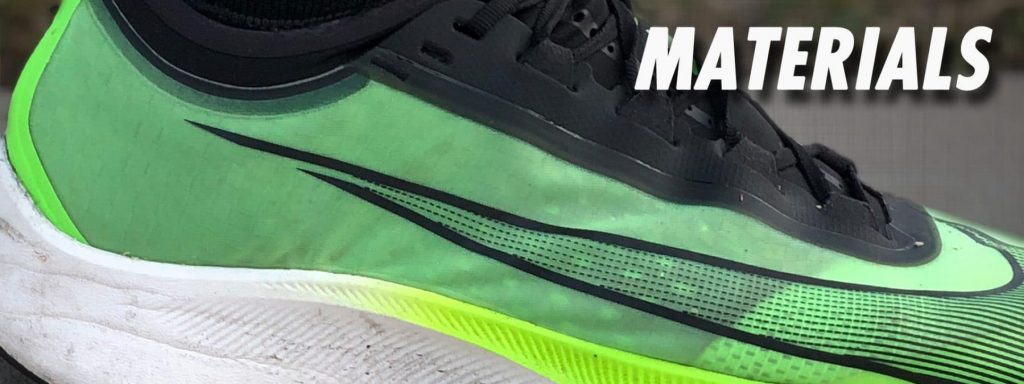
Eric: The materials on the Zoom Fly 3 are fantastic. I thought it was a bit too heavy to be on par with other serious racing shoes. Nike’s other carbon plate option, the Nike ZoomX Vaporfly Next% is about 2.3 ounces lighter. That’s a huge difference in a running shoe, especially when you compound that over a 6, 13, or 26 mile race. The weight discrepancy is mainly caused by the React cushioning. React cushioning is a lot heavier than ZoomX (but also a lot cheaper). The rest of the shoe is fantastic, the inner booty on the shoe is amazingly comfortable and more breathable than I thought it would be. The Vaporweave shroud on top of the booty is great for running in wet conditions and dries quick.
Drew: The Vaporweave upper is super light. I don’t know how they make Vaporweave but Nike has another winning material. It looks like ripstop or plastic in pictures but in reality it’s a stretchy plastic-y material. It reminds me of the type of material used to laminate paper. Hopefully Nike tells us more about it in the future because I can see them using it a lot more in upcoming running models.
The materials do have some issues. The half neoprene/half mesh bootie gets really smelly. The neoprene portion around the collar and down what would be the tongue absorbs massive amounts of sweat and is the last part of the shoe to dry. I like how it hugs the foot, but now that my shoes are too disgusting to be used casually I wish they’d used a different material. Even touching them for this review is…not the best experience. I’m going to have to wash my hands (and keyboard) after I’m done.
The laces, while better than those on the Nike Zoom Pegasus Turbo 2, come undone when soaked. I had them untie on me on 3 separate long runs (I even double knotted them!). Instagram has taught me some people solve this with elastic speedlaces but a shoe of this caliber should have better laces out of the box.
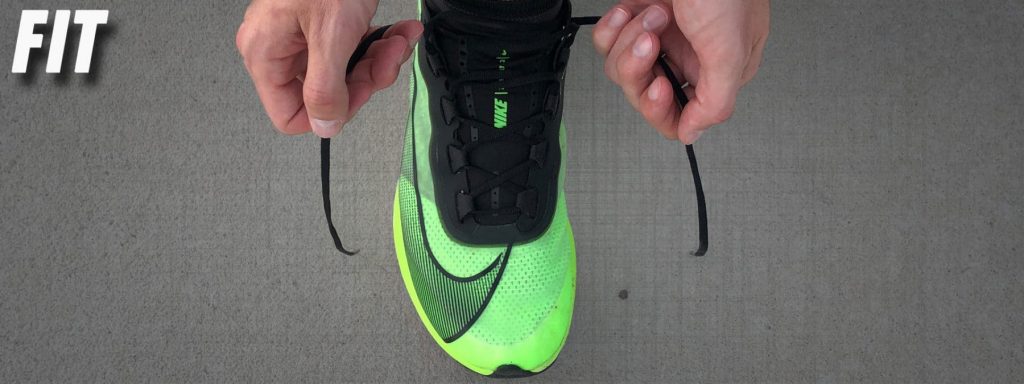
Eric: These fit long and narrow. If you have a narrow foot, I would recommend going a half size down on these. I took my usual size 13 but felt like I had a bit too much room in the toe box after my first run. Besides the length of the shoe, the fit on these felt fantastic. The inner booty forms great around your foot and I didn’t experience any pressure points when I was running.
Drew: I’ve got a narrow foot and can safely say these are one of the more narrow runners I’ve tried. The heel is really narrow. If your foot doesn’t taper to a smaller heel these shoes will most likely not be for you.
My big toe had more room than usual and I may have been able to go down half a size but I decided doing so might crush my small toes. The lateral side of the shoe curves sharply and I was worried I’d lose some toenails if I went smaller. Trying them on will help if you’re worried about extra room.
The achilles pillows are a nice touch though I wish they had put a little more padding over the seams at the rear collar. They didn’t cause any hotspots for me but I’ve seen seams like that do so. Finally, the neoprene bootie collar isn’t easy to slip on and could use tabs on tongue or heel to help get them on easier.
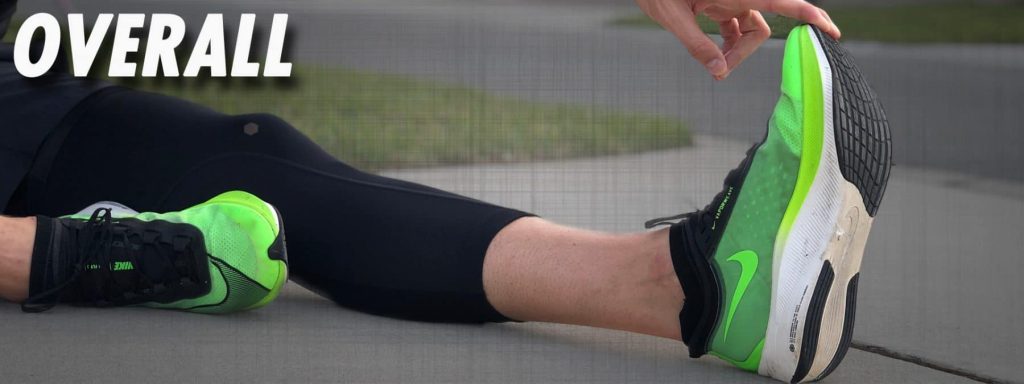
Eric: I was very skeptical of carbon fiber plates and thought it would be more of a gimmick, but man was I wrong. The stiffness of the plate really springs you forward when you press off your stride and I was running the same times as usual with less effort compared to other shoes. It really helped in the later miles of my workouts when I got a bit tired. It’s one of those shoes that makes you want to run 1-2 more miles than you intended. The instability was an issue for me and I also wasn’t happy with how heavy they were compared to other carbon plate options, but at $50-$100 less than most pairs it’s a good trade off. The materials were top notch and if I needed to run my fastest 5k these are the shoes I would grab out of my closet.
Drew: The Nike Zoom Fly 3 has flaws but overall I think it’s worth the money. Most long distance runners will feel an extra bounce in their stride, enjoy the high end cushioning and construction, and be able to utilize these for speed work, long runs, and races. It’s a versatile shoe that makes running a little more fun.
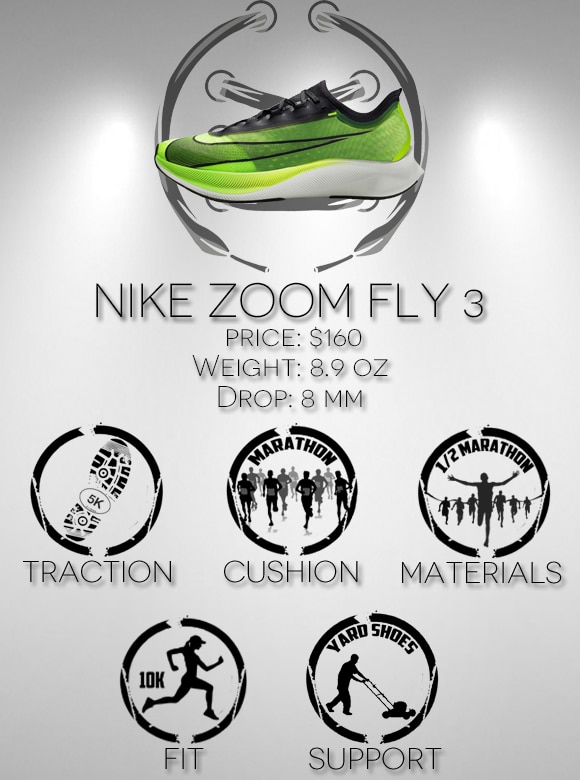
Nike was not given any editorial control of the review. This review is based on our weartesters’ experiences using the shoes for speed workouts, trail runs, treadmill training, long runs, casual wear, and more.

